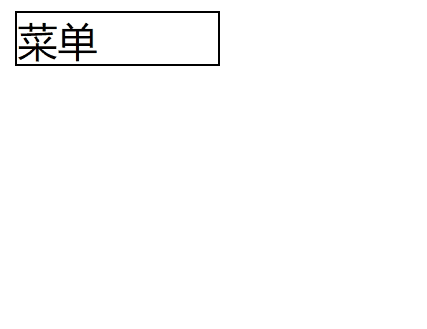文章目录
- 事件
- 1、页面加载
- 2、事件绑定
- (1)单事件绑定
- (2)多事件绑定
- (3)事件绑定方法的对比
- 3、事件切换
- 4、事件模拟
事件
1、页面加载
DOM提供了load事件用于叶面积在完毕之后执行机制,jQuery提供了ready()方法实现相似功能。但DOM中的load事件与jQuery中的ready()方法具有以下三种区别:
- DOM中的load事件:
- 没有任何简写形式
- 当HTML页面加载完毕之后出发load事件
- 一个HTML页面仅允许存在一个load事件
- jQuery中的
ready()方法:
- 具有简写形式
- 当DOM节点树加载完毕之后调用ready()方法
- 一个HTML页面允许存在多个ready()方法
jQuery中的ready()方法:示例代码如下:
<!DOCTYPE html>
<html lang="en">
<head>
<meta charset="UTF-8">
<title>页面加载(jQuery)</title>
<script src="../jquery-1.12.4.js"></script>
<script>
/*
jQuery提供了ready()方法——三种写法
作用:实现了类似于window.onload事件的功能
*/
// 写法一:
/*$(document).ready(function () {
console.log($('#btn'));
});*/
// 写法二
/*$().ready(function () {
console.log($('#btn'));
});*/
// 写法三----平常用法
$(function () {
console.log($('#btn'));
});
</script>
</head>
<body>
<button id="btn">按钮</button>
</body>
</html>2、事件绑定
(1)单事件绑定
jQuery提供了bind()方法完成事件绑定功能。
jQuery提供了unbind()方法完成事件解绑定功能。
示例代码如下:
<!DOCTYPE html>
<html lang="en">
<head>
<meta charset="UTF-8">
<title>事件的绑定与解绑</title>
<script src="../jquery-1.12.4.js"></script>
</head>
<body>
<button id="btn">按钮</button>
</body>
<script>
/*
bind(type,data,callback)方法 - 绑定事件
*参数
*type - 表示绑定的事件名称(注意:没有on)
*data -作为event.data属性传递给事件对象的额外数据对象
*callback - 表示绑定时间内的处理函数
*/
function click1() {//为按钮绑定点击事件
console.log('this is function')
}
function click2() {//为按钮绑定点击事件
console.log('this is function too')
}
$('#btn').bind('click',click1);
$('#btn').bind('click',click2);
/*
unbind(type,data,callback)方法 - 解绑定事件
*参数
*type - 表示绑定的事件名称(注意:没有on)
*data -作为event.data属性传递给事件对象的额外数据对象
*callback - 表示绑定时间内的处理函数
*情况
*如果传递事件名称的话 - 解绑定该事件的所有处理函数
*如果传递事件名称和指定的处理函数 - 解绑该事件的指定处理函数
*/
$('#btn').unbind('click',click1)
// -----------------------------------------------------------
/*
bind()与undind()中的data参数---用法并不唯一
* data参数的值->利用event事件对象的data属性进行接收
* 特点:改参数的数据内容只能在时间的处理函数中被使用——低耦合
*/
// var obj = {a:'张无忌'};
$('#btn').bind('click',{a:'张无忌'},function (event) {
console.log(event.data);
// console.log(obj);
});
</script>
</html>(2)多事件绑定
多事件绑定同样适用bind()方法完成事件绑定功能。
<!DOCTYPE html>
<html lang="en">
<head>
<meta charset="UTF-8">
<title>多事件的绑定与解绑</title>
<script src="../jquery-1.12.4.js"></script>
<style>
#title{
width: 80px;
height: 20px;
border: 1px solid black;
}
ul{
list-style: none;
padding: 0;
display: none;
}
li{
width: 80px;
height: 20px;
border: 1px solid black;
}
</style>
</head>
<body>
<div id="title">菜单</div>
<ul>
<li>北京</li>
<li>天津</li>
<li>南京</li>
</ul>
</body>
<script>
/*鼠标悬停事件
* mouseover - 表示鼠标悬停在指定元素上
* mouseout - 表示鼠标从指定元素上移开
*/
/*写法一:
$('#title').bind('mouseover',function () {
$('ul').css('display','block');
});
$('#title').bind('mouseout',function () {
$('ul').css('display', 'none');
});
*/
// 写法二---链式操作:
/* $('#title').bind('mouseover',function () {
$('ul').css('display','block');
}).bind('mouseout',function () {
$('ul').css('display', 'none');
});*/
//写法三:多事件绑定
$('#title').bind('mouseover mouseout',function () {
if ($('ul').is(':hidden')){
$('ul').css('display','block');
}else {
$('ul').css('display', 'none');
}
});
</script>
</html>上述示例代码效果图如下所示:

(3)事件绑定方法的对比

3、事件切换
jQuery提供了hover()方法模拟鼠标悬停事件效果。
示例代码如下:
<!DOCTYPE html>
<html lang="en">
<head>
<meta charset="UTF-8">
<title>事件切换</title>
<script src="../jquery-1.12.4.js"></script>
<style>
#title{
width: 80px;
height: 20px;
border: 1px solid black;
}
ul{
list-style: none;
padding: 0;
display: none;
}
li{
width: 80px;
height: 20px;
border: 1px solid black;
}
</style>
</head>
<body>
<div id="title">菜单</div>
<ul>
<li>北京</li>
<li>天津</li>
<li>南京</li>
</ul>
</body>
<script>
// jQuery提供了hover(over,out)方法
$('#title').hover(function () {
$('ul').css('display','block');
},function () {
$('ul').css('display', 'none');
});
</script>
</html>4、事件模拟
jQuery提供了trigger()方法用于模拟触发器匹配元素绑定的事件。
示例代码如下:
<!DOCTYPE html>
<html lang="en">
<head>
<meta charset="UTF-8">
<title>事件模拟</title>
<script src="../jquery-1.12.4.js"></script>
</head>
<body>
<button id="btn">按钮</button>
</body>
<script>
// 绑定事件 - 由用户进行触发,调用处理函数
$('#btn').bind('click',function () {
console.log('this is button');
});
// 模拟用户触发事件
$('#btn').trigger('click');
</script>
</html>



















